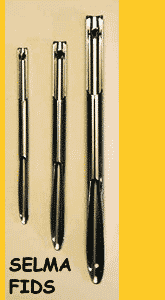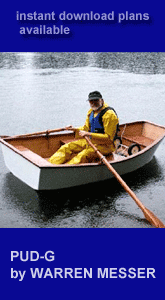Parts
1- 2 - 3 - 4 - 5 - 6 - 7 - 8 - 9 - 10 - 11 - 12 - 13 - 14
Attack of the killer Yeahbtzzzz.
There’s nothing like a little progress to slow things up. I’ve been in the process of rounding up the “structural” phase of this Frankenbuild in hopes of moving on to one of the 3-F’s: furniture, fixtures, and foo-foo. I guess that makes four, actually. But, the Real Guys refer to the last two with a more respectful “gingerbread.” And, if I had a better vision of how this thing was supposed to proceed, I’d probably think of artsy-cutsie little curves and swerves and well-crafted joinery, as well. But.
It seems that every time I go out to the shop to judge progress, not much has happened since my last visit. Things were flying along. Then, wham, stuff just stalled out. Maybe you know somebody like that.
I couldn’t seem to reach a consensus on what to put on the cabin sides, or how to make it stick. So, I decided to move inside the cabin for a while. Surely, inspiration would come calling, if I just sat quietly and looked helpless. Surely a plan would emerge. And, once again, I’m reminded of that old saw, “Watch what you’re asking for. You just might get it.” And, boy oh boy, did I get inspiration. After maybe an hour of this intervention stuff, I had more ideas than I could possibly use in ten Frankenbots. And, even worse, I managed to reject each and every idea as too hard, too much, too … well just too many moving pieces. So, back to basics.
The first order for an overnighter kind of boat is a place to sleep. Pretty simple, as these things go. It needs to have shoulder room, be long enough, be out of the normal traffic patterns, and ideally not require one to “do” anything except crawl in. And, while a mattress on the floor could sort of work, I had bigger hopes for how this essential piece of furniture should look.
So, I consulted the scrap plywood pile, dragged a bunch of tools into the boat - and built a berth flat. This is a skinny boat, and for obvious reason, the designer/builder didn’t even attempt to jamb a v-berth up under the foredeck. In fact, until a few weeks ago, that portion of the boat has resembled the Roman catacombs - not too many gladiators or lions. Just darkness and peeling paint and rotted plywood. Kind of a dank place to call home, I do admit.
Of course, somewhat recent developments have included removing a lot of the original structure, and concocting a cabin over it, opening things up lot. At least the peeling paint and rotted wood were easier to see.
And, then, finally things were getting closed in, and time for a little civilized comforts down below to begin sprouting. So, I built a bed flat. And, then, I was back to dealing with those killer yeahbutzzz. Those are the guys who always offer an objection. What to do? What to do?
My basic notion has been to put pine strips on the overhead. Cedar ceilings on the hull sides. Tigerwood staves on the cabin exterior below the belt line. And, some sort of really-attractive veneer above. But, like I was saying, nothing seemed to be happening between my visits to the shop. So, I got to thinking about my early days in the Navy. Any Fleet Sailor will tell you, when you don’t know what you should be doing, GO PAINT SOMETHING!
So, I grabbed several cans of similar color and gloss level, mixed 'em up.
And, crawled into the catacombs and proceeded to slather EVERYTHING that I could reach.
I even pulled a few chunks of cedar out of the pile and turned it into gingerbread.
And, threw a little paint that way, too.
I just wonder what comes next…
Movin’ on.
After a brief flirtation with painting the whole shebang, I’m pretty close to being almost done with that aberration. I’m more or less happy to report the foundations and even overall plan for sheathing great sections of Miss Kathleen with residual chunks of once-proud pine and cedar trees are coming together apace. However, the first attempt to insulate and prepare for wooden ceiling strips up forward became progressively unwieldy.
Sooner or later, I’ll learn that foam doesn’t glue well to, really, anything. After all this elaborate shoring and bracing and fooling around with just foam sheets pressed into place; things got a bit less confused. I added faux ribs and a sheet of ¼” plywood over and between smaller sections of foam. The thin strips should work out a lot better over the top of the ply.
This is maybe 25 percent of the exposed hull, and that’s just the portion up in the forepeak. And, not unusual to this sort of thing, the working conditions are not what the American Ergonomics Council would recommend for workers over the age of 18. A lot of crawling and elbow-leaning while using sharp, heavy, noisy things with cords and batteries and blades and pointy-things.
Then came a long, rather tedious process of slicing and dicing a stack of spaulted pine boards that have been stored away for a yet-to-be-determined project. I dithered long and hard about whether this somewhat rustic material would look visually interesting, or crude. Finally, I just decided to put some of it in, someplace, and then decide that I like it. A rather succinct method of deciding.
This stuff is naturally warped, split, full of knots and wanes, and whatnot. I use it for making rustic furniture. So, the idea of getting usable 10 foot strips of 1-3/4” x ¼” with bull nosed edges and smooth faces has always been a bit daunting.
The basic process is to cut the nominally s4s boards on the flat to three strips. Then, I take them to the router table with a 4-wing high dollar roundover bit with a ¼” radius and top bearing set to allow double passes for each side of the work piece.
The bit is set just flush with the table insert. It normally takes several passes to get a uniform relief to each of the edges. Warps and twists and such have a lot to do with that. I find that a pilot pin just gets in the way, as I am swinging a 10’ arc around at both ends of each run. Yes, of course, I use plastic hold-down pads with substantial handles, and make a supreme effort to concentrate on where my fingers are at all times.
Once rounded over on all four corners, the strips are returned to the table saw.
And split on edge. Fairly often, I don’t get the blade exactly square to the table, and then need to run the machined side through the planer to get things to lie flat.
That poor little heavy planer has been set up all over the shop, until it finally landed under the wing of the table saw. More or less out of the way, pretty much. My biggest problem is that I need to “calibrate” the planer run with the thinnest of the “keepers” to have any consistency in the final product. Yep. Quite a few cast-aways from this multi-stage process. But, on average, I get a maximum of six usable strips from one nominal 1x6 board. Assuming a thin kerf blade and a steady push, etc.
Then, the process shifts to a sort of finishing mode. I have to sand each strip to compensate for all the indignities “rustic” stock is subjected to from time of felling through to the final load-out in my shop. I use a number of different sanders, depending upon how much my hands hurt that particular day.
Anymore, I stick with Bosch, and only buy machines that have the best of vibration damping. Something called neuropathy drives this decision, for the most part. 120 grit is about the best compromise for fixing divots and re-rounding edges, etc. And, then, with the pine in order to get a more “aged” patina, I use a shellac with a yellow tint for the first finish coat. Normally, this gets left for after the stuff is glued and tacked in place.
Just about all of these pine strips have to be fitted one-at-a-time. A whole range of cutting and abrading devices come into play. I have a veteran HF band saw that is only on his second blade in 6 years’ service for the tight radius cuts.
And, often as not, the ends get rounded over with one of the disc sanders, spindle sander, or a collection of belt sanders. Two of my favorite tools came from the hock shop: A 6” Delta belt sander and a pretty-big Delta band saw, that I got for $15 because “it was old.”
But, one of the warhorses of this little cottage manufacturing setup is the slide miter. I cut just tons of this stuff on it. But, since each piece needs often to receive the old “half-kerf” trimming treatment. Sometimes even smaller cuts. I finally figured out that it would make sense to have a miter saw up in the boat as well. A little crowded, but my knees like having it around, to save climbing the ladder in and out each cut.
So, anyway. After all that cutting and grinding and chipping, I begin to get something that begins to look like this.
The long slow process of figuring it out on the fly, sometimes results in something worth keeping. So, time for me to get back to work…
|



























